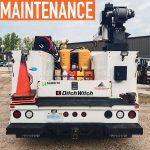Last month Teletrac Navman shared its 10-step checklist for building a comprehensive safety program and minimizing risk. This month, Teletrac Navman is back for the final part of its Fleet Safety Advisor to share how to use the data you’ve compiled with your safety program.
Thanks to new technologies available, like dashboard cameras and GPS fleet tracking software, fleet managers have a direct line of sight into how drivers perform while on duty.
Having performance data readily available at your fingertips is an invaluable advantage for a business to correct risky behaviors and avoid unsafe driving events. However, what many do not realize is that fleets use this information to not only prevent but also predict unsafe events.
Here are the top three ways to use the insights collected by video and telematics solutions:
1. Benchmark and measure performance.
Many video and telematics solutions today go beyond basic track-and-trace information, allowing fleets to tap into other areas of actionable data. Taking a deeper dive into a snapshot of daily vehicle and driver activity and longer term trends, fleet managers can specifically assess safety factors like:
- Aggressive starts: Did a driver
accelerate too quickly from a complete stop? - Speeding: Did a driver accelerate over a posted speed limit? Did a driver receive a speeding violation?
- Harsh braking and cornering: Did a driver stop abruptly or corner too aggressively?
- Hours-of-Service compliance: Did a driver violate FMCSA
regulations and exceed maximum
allowable duty time thresholds?
- Following too closely: Did the driver maintain a safe following
distance between the vehicle
in front? - Traffic lights and signs: Did a driver run a red light or make a
rolling stop at an intersection? - Fuel consumption: Is a driver using excessive amounts of fuel
(indicating aggressive driving,
speeding, or extensive idling)? - Aggressive lane changes: Did a driver speed to pass or cut in
front of another vehicle? - Accidents or crashes: Was a driver engaging in an erratic
driving pattern or harsh
maneuvering and collided with
another vehicle or object? - SMS/CSA Score: Was the company’s Compliance, Safety,
and Accountability
rating impacted?
Knowing the answers to these questions is a powerful resource for fleets. And, with the foresight into behavioral trends, the likelihood of accidents, fines, or regulatory violations can also greatly decrease.
2. Identify consistent patterns of behavior (good and bad).
An unsafe event may be a one-time incident for some drivers, but for others, it could be one of several.
By compiling performance data over a period of time, fleet managers can proactively identify those exhibiting the most problematic behaviors and address through individual training before any other events occur. They can further determine if an individual is improving or worsening by comparing behavioral data against their peers and the fleet as a whole.
From the drivers’ perspective, they can see their performance broken down into numbers, which helps them better understand what they need to improve. At the same time, good drivers are rewarded and acknowledged for their positive performance.
3. Maintain vehicle health with scheduled maintenance.
Regularly scheduled maintenance doesn’t seem like something to factor into a safety program, but vehicles that are driven aggressively and unsafely show signs of wear and tear. Such excessive use could lead to a sudden breakdown on the road, impacting not only your driver and your business, but the public as well.
Fleet managers can analyze the instances of harsh braking, acceleration, or cornering—captured through video and telematics solutions—to identify faulty equipment and avoid accidents or unnecessary downtime sooner. Tracking vehicle health and maintenance requirements also ensures that fleets remain compliant with local regulatory requirements.
Safer drivers mean more jobs can be completed and, thanks to fewer violations and accidents, fleets can see a significant reduction in insurance rates and premiums. That money saved can then be reinvested in other areas of operation to grow your business. It’s a win-win for all.
FOR MORE INFORMATION
Find out more about how technology can help you implement a safety program, call 800.835.3872 or visit www.teletracnavman.com.
MODERN WORKTRUCK SOLUTIONS: NOVEMBER 2018 ISSUE
Did you enjoy this article?
Subscribe to the FREE Digital Edition of Modern WorkTruck Solutions magazine.
![]()




